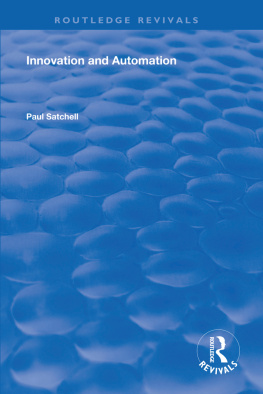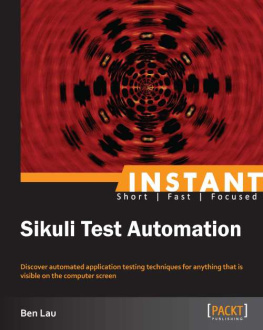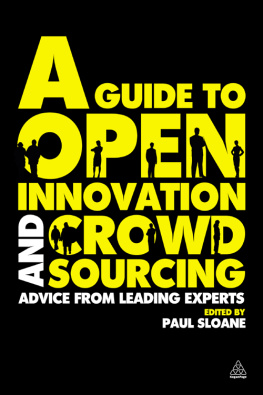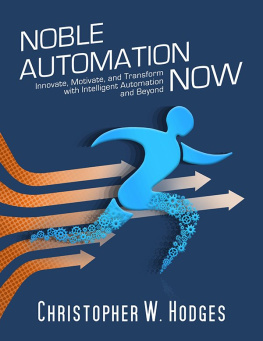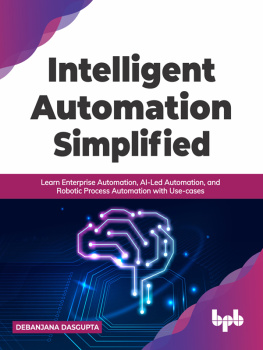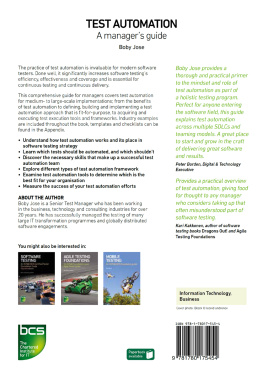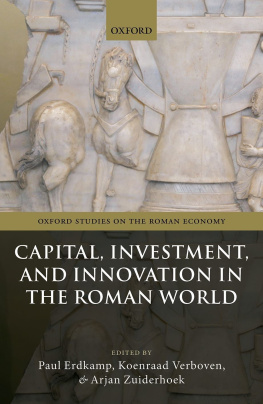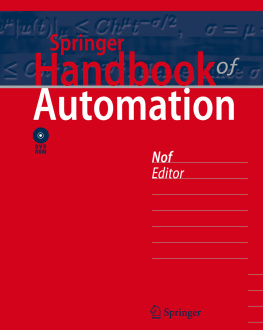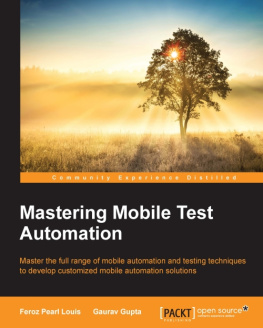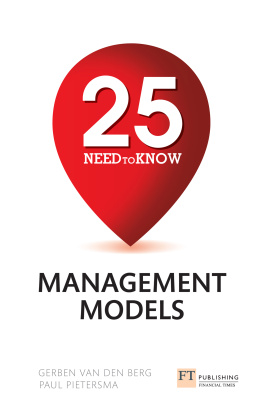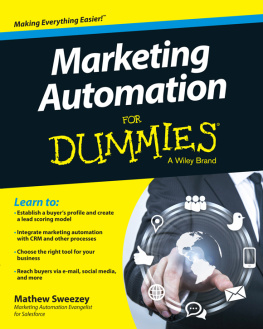INNOVATION AND AUTOMATION
To Henri and Paul, who between them made a work place in which humans were valued above all other factors.
Innovation and Automation
Paul Satchell
Director
Sattress
First published 1998 by Ashgate Publishing
Reissued 2018 by Routledge
2 Park Square, Milton Park, Abingdon, Oxon, OX14 4RN
711 Third Avenue, New York, NY 10017, USA
Routledge is an imprint of the Taylor & Francis Group, an informa business
Copyright SATTRESS PTY. Limited 1998
All rights reserved. No part of this book may be reprinted or reproduced or utilised in any form or by any electronic, mechanical, or other means, now known or hereafter invented, including photocopying and recording, or in any information storage or retrieval system, without permission in writing from the publishers.
Notice:
Product or corporate names may be trademarks or registered trademarks, and are used only for identification and explanation without intent to infringe.
Publisher's Note
The publisher has gone to great lengths to ensure the quality of this reprint but points out that some imperfections in the original copies may be apparent.
Disclaimer
The publisher has made every effort to trace copyright holders and welcomes correspondence from those they have been unable to contact.
A Library of Congress record exists under LC control number: 97045521
ISBN 13: 978-1-138-32637-8 (hbk)
ISBN 13: 978-1-138-32639-2 (pbk)
ISBN 13: 978-0-429-44988-8 (ebk)
Innovation is an increasingly important factor in organisational competitiveness, but the concepts and processes underlying innovation remain in a state of flux. Automation surrounds us, helps us, controls us and protects us, but concepts and processes that have provided benefit are also ill defined. Automation and innovation often occur simultaneously but not often independently. Some of the interactions between innovation and automation have been beneficial, some have impaired both processes, while others have caused catastrophes. We have failed to appreciate the consequences of these interactions.
Understanding how innovation and automation coexist and how they can be mutually optimised is the purpose of this book. While both have impinged upon my research and industry activities in a number of ways, a fuller understanding of their interactions has come about because a number of individuals have acted as sounding boards. Those who have suffered most include John Shaw, John Boyle and Ling Yoong. Sharing with the 'Boulders Group', Chris Russell, Brian Thomas, Doug Shaw, Geoff Eagleson and John Lysaght has helped, as have the reflections of Kim Paul, David Cox, Graham Beaumont and Janne Graham. At work, many have tossed in ideas and observations, particularly Alison, Ruth, Bernie, Peter and my fellow directors. Lastly, my family, Anne, Amy and Olivia have provided much critical and even some uncritical support, vital factors in producing the following.
Paul Satchell,
Sattress Pty. Limited, August 1997.
Innovation is an important factor in organisational competitiveness. Competitiveness also depends upon automation. Innovation and automation have been pursued simultaneously but often independently, the assumption being that their differences exclude them from affecting one another. Increasingly, interactions and interdependencies are appearing between innovation and automation, though their compatibility has been little considered. Current approaches to blending innovation and automation are failing to comprehend the consequences for humans or machines.
Central to this book is the proposition that organisational success will depend upon optimisation of the interaction between the organisation's ability to innovate and the manner in which organisational functions are automated. It is possible that evidence for or against this proposition will be difficult to obtain, because of our primitive understanding of the behavioural and attitudiual changes induced by and required for useful automation and innovation. However, our inability to measure these changes does not mean that the trade-off between innovation and automation should be ignored. Indeed, the converse is true. Innovation and automation are interlinked in ways, assumed to be beneficial. Often they are not, and frequently have been mutually harmful. The need for both has occasionally produced interactions which have been unexpected and disastrous, as evidenced by some commercial aircraft accidents, industry incidents and other untoward events in medical care systems. This is reason enough to consider innovation and automation and their interactions in some detail. There are many other interactions which have not produced disasters, but which have resulted in unforeseen consequences sufficient to question current approaches. At present, both innovation and automation are topical, although most fail to appreciate their potential for affecting each other. A proven approach for pursuing them simultaneously does not exist.
This book develops a framework for understanding the interactions between innovation and automation. It starts by considering each as distinct entities. Innovation is considered first, its importance, and its current place in organisations. Our understanding of innovation has not been helped by confusion about its contribution to organisational competitiveness and by the variety of explanatory schemes. In addition to reviewing these schemes, the process underlying innovation is considered at the level of human creativity, as this is the key element. Unfortunately, our understanding of creativity has been too much gleaned from studies of creative individuals. This conceptual framework has recently been modified by viewing creativity in an environmental context. Thus, for each individual there is an interactive environmental effect, composed of the individual's reaction to the environment and often the environment's reaction to the individual This requires little modification for those who are not 'creatives'. The environmental view is particularly apt, because creativity in organisations is not the creativity of a particular individual in isolation, but reflects a mixing of the creativity of many people in social networks, faced with challenges specific to their work place Understanding the organisational context for creativity is vital and can be described in relation to prevailing behavioural rituals. Rituals vary in their capacity to act as a starting point for creativity with many factors in organisations contributing to rituals that dampen creativity, and hence innovation.
Having considered innovation, creativity and ritual in organisations, the book next addresses current approaches to the process of automation. Despite automation having a myriad of beneficial effects, it has frequently proved disappointing, even impinging harmfully on creativity. Harmful effects are contained within the current technology-centred approach and its propensity to control without providing feedback. It is associated with a variety of complex behavioural responses which alter motivation and involvement. A key behavioural response involves humans being distanced or peripheralised from their surroundings, with damaging effects on the capacity of individuals to continuously engage with changes in their environment. Thus, there have been general unwanted effects from automation which have been unexpected, costly and have reduced usefulness. As well, there have been specific effects on an individual's capacity to deploy their creativity, because of automation's capacity to disrupt interaction with the environment. To a large degree, these consequences reflect the underlying value that the technology-centred approach has ascribed to humans, which manifests as humans and machines being seen as comparable. A new approach called human-centred automation has tried to break free from viewing human-machine sharing in terms of comparability, but has struggled with achieving what many have desired for a long time, namely true complementarity. Current approaches to automation are at best neutral in their effect on the capacity of individuals to be innovative, but more often than not have been harmful.


